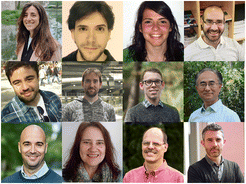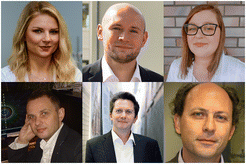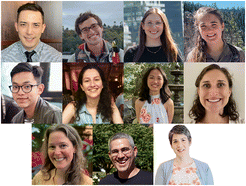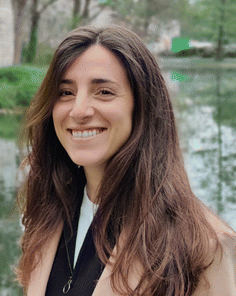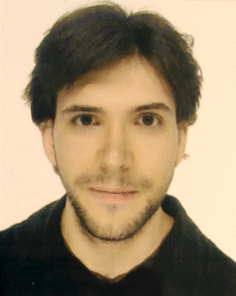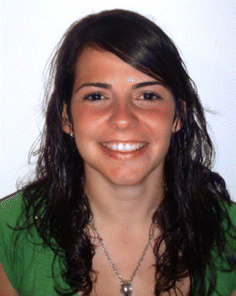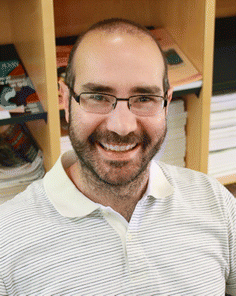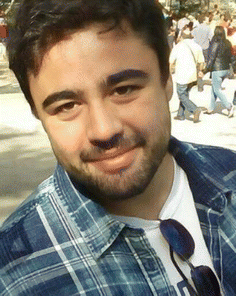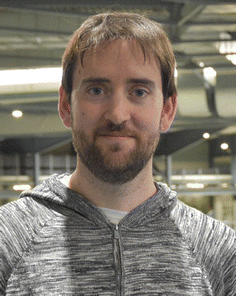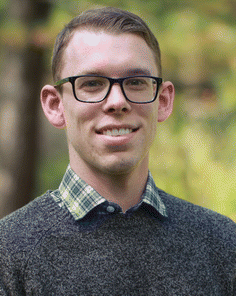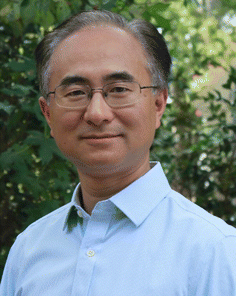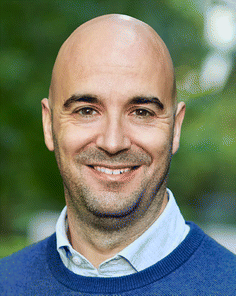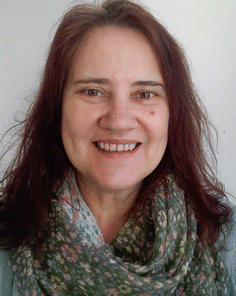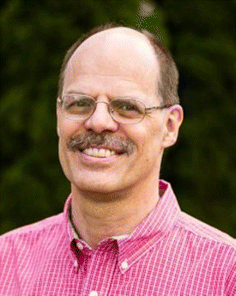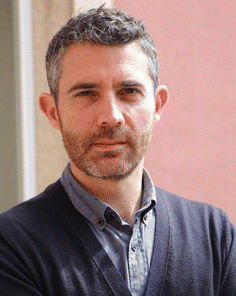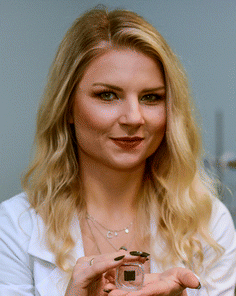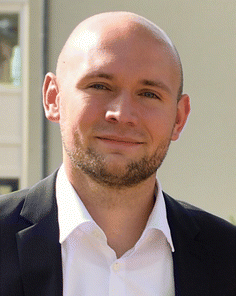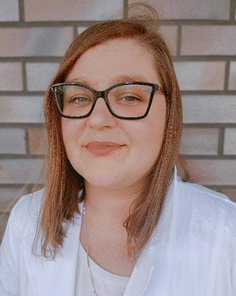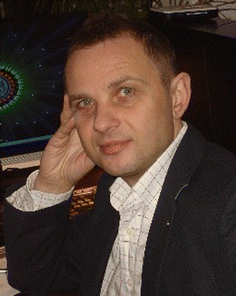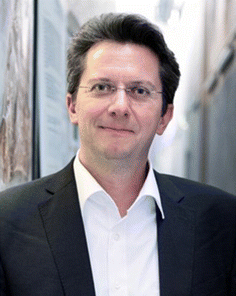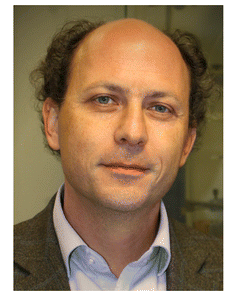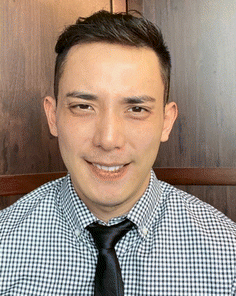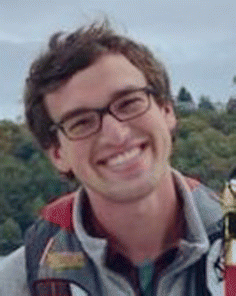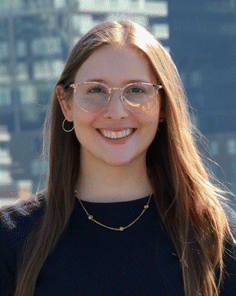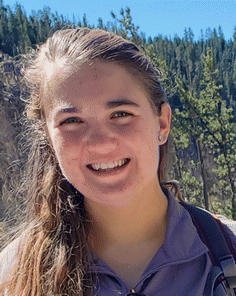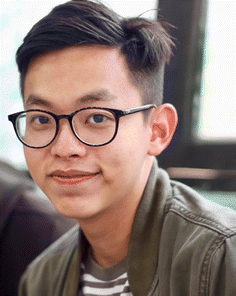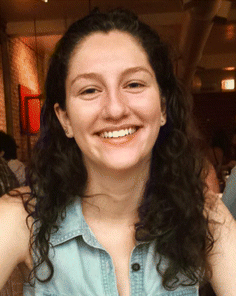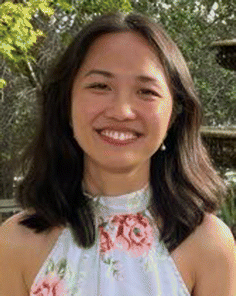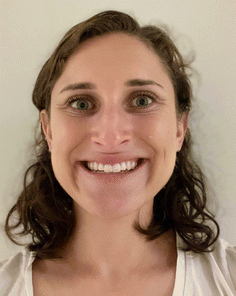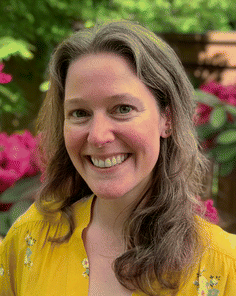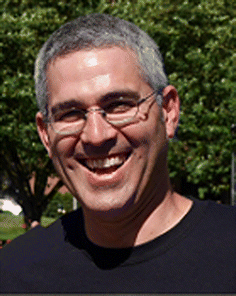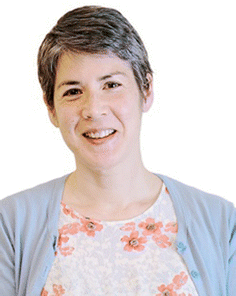DOI:
10.1039/D3MH90019C
(Editorial)
Mater. Horiz., 2023,
10, 1469-1478
Materials Horizons 2022 Outstanding Paper Award
We are delighted to introduce the winners of our 2022 Outstanding Paper Award in this Editorial.
Our selection process remains the same as in previous years (see our introductory Editorial from 2019) retaining the focus on the science presented and the potential future impact of the work. The quality of the articles we published throughout 2022 was excellent, and therefore we have chosen to award not only our most Outstanding Paper, but also a runner-up and an Outstanding Review for 2022.
Please join us in congratulating our winners; we hope you enjoy reading their outstanding articles as much as we did.
Materials Horizons Outstanding Article 2022:
Semi-paracrystallinity in semi-conducting polymers
Sara Marina, Edgar Gutierrez-Fernandez, Junkal Gutierrez, Marco Gobbi, Nicolás Ramos, Eduardo Solano, Jeromy Rech, Wei You, Luis Hueso, Agnieszka Tercjak, Harald Ade and Jaime Martin
In this outstanding article (https://doi.org/10.1039/D1MH01349A), the authors introduced a new structural model for polymer materials, i.e. the semi-paracrystalline organization, which is based on the coexistence of small paracrystalline regions and disordered regions. Relying on order-parameters such as the degree-of-paracrystallinity and the lattice distortion parameter, this model is the most suitable framework to understand the complex solid-state microstructure of semiconducting polymers for photovoltaics. As a proof of concept, structural parameters of the model are correlated with charge carrier transport, revealing that charge mobility in these semiconducting polymers is particularly sensitive to the interconnection of paracrystalline domains.
Materials Horizons Outstanding Article runner-up 2022:
Ultra-stable self-standing Au nanowires/TiO
2
nanoporous membrane system for high-performance photoelectrochemical water splitting cells
Ewa Wierzbicka, Thorsten Schultz, Karolina Syrek, Grzegorz Dariusz Sulka, Norbert Koch and Nicola Pinna
In this outstanding article (https://doi.org/10.1039/D2MH00718E), the authors developed a novel synthesis method of a core–shell structure composed of nanostructured self-standing titania nanotubes (light absorber) filled with Au nanowires (electron collector). The synthesis of thin self-standing TiO2 further combined with Au nanowires electrodeposition itself is an original procedure. The photon to current efficiency of the photoanode reaches 35% and is four times higher than that of a reference obtained with the same anodizing conditions. The material shows incredible stability confirmed by no photocurrent loss during 100 on–off cycles of light illumination, after 12 h constant illumination, and after one-month storage in air. The reasons for such an improvement are attributed to the original architecture of the photoanode that promotes electron separation due to the presence of a Schottky type contact and fast electron transport through the Au nanowires.
Materials Horizons Outstanding Review 2022:
Organic building blocks at inorganic nanomaterial interfaces
Yunping Huang, Theodore A. Cohen, Breena M. Sperry, Helen Larson, Hao A. Nguyen, Micaela K. Homer, Florence Y. Dou, Laura M. Jacoby, Brandi M. Cossairt, Daniel R. Gamelin and Christine K. Luscombe
In this outstanding review (https://doi.org/10.1039/D1MH01294K), the authors summarized guidelines for using organic molecules to modulate the properties of inorganic nanomaterials via interface engineering, as an alternative to conventional methods of composition engineering and/or morphology engineering, exploiting a unique opportunity in nanomaterials – their large surface area. The design of these organic molecules follows the “anchor-functionality” paradigm, which was later explained by a comprehensive range of material types (e.g., lead halide perovskites, II–VI semiconductors, III–V semiconductors, metal oxides, diamonds, carbon dots, silicon, etc.) and applications (e.g., light-emitting diodes, photovoltaics, lasers, photonic cavities, photocatalysis, fluorescence imaging, photodynamic therapy, drug delivery, etc.).
This work was made possible through the establishment of an NSF-funded center, UW Molecular Engineering Materials Center (UW-MEMC) bringing together and integrating expertise from different disciplines including organic/polymer chemists (Yunping and Christine), and inorganic chemists (Breena, Helen, Hao, Micaela, Florence, Brandi, Theodore (Ted), Laura, and Daniel). The conception of the tutorial review started when Yunping and Ted worked on using zwitterionic polymers to stabilize lead halide perovskite quantum dots (https://doi.org/10.1021/acs.chemmater.1c00902), during which some jokes were exchanged, for example, “Quantum dots look the same” from an organic chemist and “Polymers look the same” from an inorganic chemist. We saw there was a need to bridge the knowledge gap between the organic community and the inorganic community to facilitate in-depth interdisciplinary research. Thus, we looped in students working in different domains and let them take the lead, explaining to each other their research domains and organizing them into a tutorial review.
Dr Michaela Muehlberg, Executive Editor
Professor Martina Stenzel, Editorial Board Chair
Author Biographies
Materials Horizons Outstanding Article 2022:
Semi-paracrystallinity in semi-conducting polymers
Sara Marina Barbier is a Scientist/Polymer Specialist in the Technology and Innovation Polymer laboratory at Sibelco Netherlands. She received her BSc in Chemistry in 2016, she then completed a MSc in Applied Chemistry and Polymer Technology and finally obtained her PhD in Polymer Science in 2021 in the group of Dr Jaime Martin. During her PhD she focused on investigating the morphology and structure of non-fullerene based organic solar cells, during which time she contributed to the introduction of the new structural model known as semi-paracrystallinity. She is currently working on every polymer application in which Sibelco minerals play a key role, focusing primarily on the development of innovative aluminum trihydroxide (ATH) and spherical alumina (SA) grades for thermal management and flame retardant applications, as well as promoting and expanding Sibelco's portfolio of nepheline syenite and cristobalite minerals for the polymer film industry as anti-blocking and greenhouse additives.
Edgar Gutierrez-Fernandez is currently a post-doctoral researcher at BM28-XMaS beamline, at the European Synchrotron (Grenoble, France), associated to the University of Warwick (United Kingdom). He received his PhD in Physics from the Complutense University of Madrid in 2019 and worked as a post-doctoral researcher at the University of the Basque Country (San Sebastian, Spain). His research interests are focused on studying the structure of organic semiconductors under
in-operando conditions using X-ray synchrotron radiation.
Junkal Gutierrez is an Associate Professor and Senior Researcher of the ‘Materials + Technologies’ Group (GMT) in the Chemical Engineering and Environmental Department of the University of the Basque Country (UPV/EHU) in Donostia-San Sebastián, Spain. She obtained a PhD degree in 2012 with a thesis project focused on the development of novel polymeric composites containing nanoparticles. After that, she was awarded a postdoctoral fellowship with financial support of UPV/EHU to investigate multifunctional materials based on biopolymers from renewable resources. She undertook different research stays during the postdoc and from September 2017 has acted as a teacher and researcher at the University of the Basque Country (UPV/EHU). Her research is focused on the development of novel polymeric materials and the characterization of their physico-chemical and morphological properties.
Marco Gobbi is a Ramon y Cajal and Ikerbasque Fellow at the Materials Physics Center in San Sebastian (ES). After obtaining his PhD in 2013, Marco Gobbi worked as a postdoctoral researcher at the institute of Supramolecular Science and Engineering in Strasbourg (FR), as a Marie Curie Fellow at the Materials Physics Center (ES), and as a La Caixa Junior Leader at CIC nanoGUNE (ES). His research interests focus on the study of 2D material/molecule hybrids and low-symmetry materials for spintronics and quantum computing.
Nicolás Ramos Gómez is a PhD candidate at Jaime Martin's Lab in the University of the Basque Country. He studied for his degree in materials engineering at the Universidad Politécnica de Madrid with an internship at CIEMAT (fotoair group) in the fourth year doing heterogeneous photocatalysis and pollutant cleaning of the air. He completed and finished the final degree work at the Institute of Optics Daza de Valdés of the CSIC making a Fabry–Perot cavity with thin film sandwich structure growth by PLD. After finishing his Master's studies in polymers at the ICTP (CSIC) he moved to the Basque Country to develop the thesis. It consists of investigating the solid-state microstructure of polymers with high charge carrier mobility
via the study of glassy phases.
Eduardo Solano is a beamline scientist at NCD-SWEET beamline, the hard X-rays scattering beamline at ALBA synchrotron (Spain). He received a BS in chemistry in 2009 and a PhD in chemistry in 2013 (Autonomous University of Barcelona, Spain), where he specialized in the use of large facilities for (nano)materials characterization. After that, he moved as a post-doctoral researcher to Ghent University (Belgium) in the group of Prof. Christophe Detavernier, where he worked on the
in situ characterization of Atomic Layer Deposition processes using synchrotron radiation. In 2017 he returned to Spain as a post-doctoral researcher at ALBA synchrotron to implement and exploit the surface scattering techniques (
i.e. GISAXS & GIWAXS), opening new possibilities for the synchrotron users community. In 2020, he became a permanent beamline scientist at ALBA synchrotron. His research interests focus on the use of the synchrotron radiation toolbox for the characterization of materials, systems and processes for energy harvesting and transport, catalysis, and biomedical applications.
Jeromy Rech is a synthetic organic chemist who focuses on chemistry enabled materials discovery – using organic synthesis to understand and control the properties of polymers for specific applications. Earning his PhD at the University of North Carolina at Chapel Hill, he used this approach to design low cost, semi-transparent, and high efficiency polymers for use in organic photovoltaics. Integrating this into practice, he collaborated on projects which incorporated these semi-transparent solar panels with greenhouses to help boost crop yield and create an off the grid greenhouse. In a similar theme through the Intelligence Community Postdoctoral Research Fellowship Program, he is working at Stanford University in Prof. Zhenan Bao's lab to design conjugated polymers which can dynamically tune the absorption of specific wavelengths of light outside the visible light range. These smart windows can control the amount of heat which enters your house and drastically cut the heating and cooling costs without interfering with the transparent nature of your windows. His research success led to him being honored by
Forbes magazine's 30 Under 30 list for best young scientists in the country. Later this year, he will join the University of North Carolina at Asheville as an Assistant Professor of Chemistry. Along with teaching, he will start up a research lab which focuses on making low cost, scalable, and recyclable polymers for a variety of electronic applications.
Wei You was born in a small village outside of Chuzhou in Anhui Province of China and grew up in Hefei, the provincial capital of Anhui. After receiving a BS degree in Polymer Chemistry from University of Science and Technology of China in 1999, he attended the graduate program of chemistry at the University of Chicago, where he obtained his PhD in 2004 under the guidance of Professor Luping Yu. He then moved west and finished his postdoctoral training at Stanford University in 2006 with Professor Zhenan Bao. In July 2006, he joined the University of North Carolina at Chapel Hill as an Assistant Professor in Chemistry. He was promoted to the rank of Associate Professor in 2012 and then Full Professor in 2017. He is currently the Chair of the Chemistry Department (2020–current).
He has published over 170 papers in premier journals such as Nature Materials, JACS, Angew. Chem., Int. Ed., Macromolecules, Advanced Materials, among others. He was an Associate Editor for Polymer Chemistry (RSC) (2013–2022) and has been serving as Specialty Chief Editor for Optoelectronic Materials, Frontiers in Electronic Materials since July 2020. He has also served on the advisory board for Macromolecules (ACS) and ACS Applied Energy Materials (ACS). He has received the DuPont Young Professor Award (2008), NSF CAREER Award (2010), Camille Dreyfus Teacher-Scholar Award (2011), Tanner Award for Excellence in Undergraduate Teaching (2011), CAPA Distinguished Junior Faculty Award (2012), Ruth and Phillip Hettleman Prize for Artistic and Scholarly Achievement (2013), Fellow of the Royal Society of Chemistry (FRSC) (2017), and “World Highly Cited Researchers” by Web of Science Group (2019, 2020, 2021, 2022). His group is currently investigating novel polymers for solar cells, new polymerization methodologies and their applications, and organic/inorganic hybrid 2D perovskites.
Luis E. Hueso is an Ikerbasque Research Professor, leader of the Nanodevices Group and scientific director of the Unit of Excellence “Maria de Maeztu” at CIC nanoGUNE. Since his PhD in 2002 he has worked at the University of Cambridge (UK) [with Professor Neil D. Mathur], the Italian National Research Council [with Dr Alek Dediu] and the University of Leeds (UK) as a University Lecturer. His current research interests include organic electronics and spintronic devices, as well as advanced nanofabrication. He is a Fellow of the Royal Society of Chemistry (FRSC). Other previous recognitions of his research include a Junior Research Fellow at Wolfson College (Cambridge) and a Molecular Science Frontier Professorship from the Institute of Chemistry of the Chinese Academy of Sciences.
Agnieszka Tercjak received her Degree in Chemical Technology Engineering at the Technical University of Gdańsk (Poland) in 1995 and obtained a PhD Degree from the same university in 2000. She moved to the Max-Planck Institute for Polymer Research in Mainz (Germany) in 2001 for a one and a half year Postdoctoral Fellowship. In 2003 she joined the Group ‘Materials + Technologies’ (GMT) of the Chemical Engineering and Environmental Department of the University of the Basque Country (UPV/EHU) in Donostia-San Sebastián (Spain). In 2005 she was awarded a Postdoctoral Fellowship financed by the Basque Government (E Modality) and in 2010 she got a Ramón y Cajal Postdoctoral Senior Grant from the Spanish Science and Innovation Ministry. From 2012 she has been Professor of the Master in Renewable Materials Engineering and Master in Advanced Materials Engineering. Since 2016 she is working as a Permanent Senior Researcher at UPV/EHU. Her scientific interest is focused on nanostructuration of thermoplastic and thermosetting polymeric systems (synthesis, characterization, modification to enhanced final properties of designed materials).
Harald Ade is a graduate of Stony Brook University. He has been a faculty member at NCSU since November 1992, rising through the ranks to Full Professor by 2001, and been named Distinguished Professor of Physics in 2014 and Goodnight Innovation Distinguished Professor in 2017. He has had an active and continually funded research program and served as Director of Graduate Program in Physics from 2006–2013. Recognitions include R&D100 Award, NSF Young Investigator Award, APS Fellow, AAAS Fellow, Alumni Outstanding Research Award (twice, NCSU), Holladay Medal (NCSU), K. F. J. Heinrich Award, and Shirley Price for Outstanding Science and Halbach Award of Innovative Instrumentation (both at the Advanced Light Source). He is a Clarivate Analytics Highly Cited Researcher in the field of Materials Science since 2017, based in large part on his development of soft-ray resonant scattering methods and use in organic electronics. Some of his external engagements include serving on the Scientific Advisory Committee of the Advanced Light Source (2011–2019) and the BESSY-II Synchrotron Facility in Berlin, Germany (2006–2009), as well as the Scientific Advisory Council of the Helmholz Zentrum Berlin, Germany (2009–2012). He has conceived and coordinates interdisciplinary efforts at NCSU across the Carbon and Organic Electronics Laboratories (ORaCEL) and the Carbon Electronics Cluster as part of the NCSU Chancellor Faculty Excellence Program. He is Chair of the 15th International Symposium on Functional π-electron Systems (Fπ-15).
Jaime Martín is a Ramon y Cajal researcher and a lecturer at University of La Coruña (Spain), where he leads the
Group of Functional Polymer Materials (https://www.jaimemartinlab.com). He also holds a visiting Ikerbasque Fellow position at POLYMAT in San Sebastián (Spain). After his PhD from the Institute of Polymer Science and Technology of CSIC (Madrid, Spain, 2011), Jaime joined the Institute for Micro- and Nanotechnology as a postdoc (Madrid, CSIC, 2011–2014) and then the Materials Department of Imperial College London as a Marie Sklodowska Curie Fellow (London, UK, 2014–2017). In 2017 he moved back to Spain, this time to POLYMAT in San Sebastian, as a Gipuzkoa Fellow. Shortly after, in 2018, Jaime was awarded with both an Ikerbasque Research Fellow position and a Ramon y Cajal Fellow position and started his own research group focused on understanding the solid-state microstructure of conjugated polymers and how this is connected with materials' properties (optoelectronic, mechanical, barrier,
etc.). In 2020, he moved his group to the University of La Coruña (Spain), where he combines his research activities with lecturing.
Materials Horizons Outstanding Article runner-up 2022:
Ultra-stable self-standing Au nanowires/TiO
2
nanoporous membrane system for high-performance photoelectrochemical water splitting cells
Ewa Wierzbicka received her PhD in Chemistry in 2016 from Jagiellonian University in Cracow, Poland. Between 2017–2019 she did postdoctoral studies at Complutense University of Madrid, Spain, and next at the University of Erlangen-Nuremberg, Germany. Then she was awarded an Alexander von Humboldt Fellowship for postdoctoral researchers which was hosted by the University of Erlangen-Nuremberg and Humboldt University of Berlin. Currently she is an assistant professor at the Military University of Technology in Warsaw, Poland. Her research interests include the development of nanomaterials for photocatalysis, photoelectrocatalysis, electrochemical sensors, and also materials for corrosion protection.
Thorsten Schultz graduated from the University of Leipzig (Germany) in 2014 and obtained his PhD degree in physics in 2018 from the Humboldt Universität zu Berlin (Germany), working in the group of Professor Norbert Koch on energy level alignment mechanisms at inorganic–organic semiconductor interfaces investigated with photoelectron spectroscopy. In 2019, he joined the Helmholtz-Zentrum Berlin für Materialien und Energie as a Postdoc, deepening his experience in the field of photoelectron spectroscopy. He continued working on the energy level alignment manipulation at organic/inorganic semiconductor interfaces, culminating in a universal method to adjust the energy level alignment at such interfaces over a wide range by the insertion of thin molecular donor/acceptor interlayers, the so-called interlayer method. He is now permanently employed as a beamline scientist at Helmholtz-Zentrum Berlin and will be responsible for the ENERGIZE beamline after its completion, which will be dedicated to research on hybrid materials and energy efficient technologies.
Karolina Syrek received her PhD in Chemical Sciences in 2018 from the Jagiellonian University. During her doctoral studies, she completed an internship at the University of Illinois at Urbana-Champaign in Prof. Joaquin Rodriguez-Lopez's electrochemistry group. Her primary research area is connected to the synthesis and photoelectrochemical characterization of nanostructural anodic metal oxides. She currently works as a post-doctoral researcher at Jagiellonian University on the project concerning the design, synthesis, and characterization of electrochemically obtained core–shell semiconducting electrodes.
Grzegorz D. Sulka received his PhD in Chemistry (1999) at the Jagiellonian University in Krakow, Poland. In the years 2000–2003 he was a Belgian Government fellow at the Katholieke Universiteit Leuven, and in 2008 the Deutscher Akademischer Austauschdienst fellow at the Max Planck Institute of Microstructure Physics, Halle, Germany. Currently, he is a full professor and head of the Electrochemistry Group at the Jagiellonian University. His research interests include electrochemical synthesis of nanomaterials and thin films, photoelectrochemical and semiconducting properties of nanomaterials as well as electrocatalysis. In particular, his interest is focused on the synthesis, characterization and applications of anodic metal oxides in the field of energy conversion and storage, novel biomaterials, and sensing devices. He has also experience in template-assisted fabrication of nanowire, nanotube and nanodot arrays for electrocatalysis.
Norbert Koch studied technical physics at the Technische Universität Graz, Austria. At the same university he received a doctorate in solid state physics in 2000. He spent the following two years as a postdoc at Princeton University and worked on organic/metal interfaces and covalently surface-bound self-assembled monolayers. After moving to Berlin in 2003, he started building his own group, and unravelled a comprehensive understanding of interfaces of organic semiconductors with inorganic materials and developed methods to optimize interface electronic properties. In 2009 he was appointed as professor in the Department of Physics of Humboldt-Universität zu Berlin, and in 2010 his group at Helmholtz-Zentrum Berlin für Materialien und Energie was established. At present, doping of organic semiconductors, and interfacial phenomena with perovskites and 2D materials are the focus of his research agenda.
Nicola Pinna studied physical chemistry at the Université Pierre et Marie Curie (Paris). He received his PhD in 2001, and in 2002, he moved to the Fritz Haber Institute of the Max Planck Society (Berlin). In 2003, he joined the Max Planck Institute of Colloids and Interfaces (Potsdam). In 2005, he moved to the Martin Luther University, Halle-Wittenberg, as an Assistant Professor of Inorganic Chemistry. From March 2006 to June 2012 he was a researcher at the Department of Chemistry and CICECO of the University of Aveiro and from September 2009 to June 2012 he was also Assistant Professor at the school of chemical and biological engineering Seoul National University in the framework of the world class university project founded by the National Research Foundation of Korea. In July 2012 he joined the Department of Chemistry of the Humboldt University in Berlin. In 2011 he was ranked among the top 100 materials scientists of the past decade by impact. His research activity is focused on the development of novel routes to nanostructured materials, their characterization, and the study of their physical properties.
Materials Horizons Outstanding Review 2022:
Organic building blocks at inorganic nanomaterial interfaces
Yunping Huang received his PhD at the University of Washington under the supervision of Prof. Christine Luscombe. He started as an organic chemist investigating the low-cost synthesis of organic semiconductors and developed a streamlined method to synthesize highly fluorescent dyes from caffeine derivatives. This novel method received funding from the NSF PFI awards to further explore its commercial potential and Yunping was later invited to speak at the DOE Lighting R&D Workshop. Yunping expanded his research interests into quantum dots and nanoparticles interfaces
via collaboration with Prof. Daniel Gamelin and Prof. Brandi Cossairt. Yunping is now a post-doc researcher at the University of Colorado Boulder under the supervision of Prof. Seth Marder, where he furthers his study in quantum dot and nanoparticle interfaces.
Theodore Cohen (Ted) grew up in Tampa, Florida and graduated
Summa Cum Laude from Washington University in St. Louis with a degree in Energy, Environmental and Chemical Engineering. While there, he worked with Professors Rajan Chakrabarty and Pratim Biswas to investigate the nucleation and growth processes of flame aerosol reactor synthesized metal oxide nanostructures and won the SS IMF Marsden Senior Prize in Chemical Engineering. He recently defended his PhD in Molecular Engineering and Sciences at the University of Washington, where he worked under Professors Daniel Gamelin, Christine Luscombe, and Devin MacKenzie. He leveraged the expertise of his three advisers to produce a broad array of research investigating perovskite nanocrystals for luminescent solar concentrators, polymer composites, and additive manufacturing of integrated photonic devices. While there, he earned a UW Clean Energy Institute Fellowship and participated in the Torrance Technology Due Diligence Fellowship Program, where he provided technical assessments of early stage companies for clean energy investors at E8 Angels. He is currently a vendor process engineer in AR waveguide research with Meta Reality Labs.
Breena Sperry is a nanomaterials scientist who graduated with a BSc in Nanoscale Engineering in 2017 (University at Albany, USA) and a PhD in Materials Science and Engineering in 2022 (University of Washington, USA). She began researching electrochemical nanocrystals in 2015 at the Colleges of Nanoscale Science and Engineering, followed by interning at Plug Power, Inc, a fuel cell company. For her PhD, she joined the group of Prof. Christine Luscombe, where she focused on the synthesis and characterization of optoelectronic nanocrystals for photovoltaic applications. Currently, she is advising for a solar energy start-up, Power Bloom Solar, Inc. Breena's interests include investigating and developing low-cost and sustainable technologies.
Helen Larson is a PhD student at the University of Washington under the supervision of Professor Brandi Cossairt. Her research focuses on the mechanistic understanding of size and morphology control of indium phosphide nanomaterials for use in optoelectronic technologies. With the Center for the Science of Synthesis Across Scales, she also explores the intersection of colloidal nanoscale synthesis with biomineralization to look at organic templates which aid in nanocrystal nucleation and growth. Prior to starting her PhD, Helen received her BA in Chemistry with a concentration in Environmental Studies from St. Olaf College in Minnesota, where she performed research on nickel-catalyzed arylation of oxazoles and benzoxazoles with aryl chlorides under the mentorship of Dr Dipannita Kalyani.
Hao Nguyen received his BS in Chemistry from Texas A&M University in 2020. His thesis focused on exploring the effects of metallodithiolate ligands on transition metals to create bio-inspired organometallic catalysts. Presently, he is pursuing his PhD in Chemistry at the University of Washington, under the supervision of Professor Brandi Cossairt. His research interests include developing inorganic shelling techniques for Cd-, In-, and Pb-based quantum dots, and other emissive colloidal systems. Additionally, he aims to leverage machine learning algorithms to aid in the synthesis of nanocrystals. His overarching research goal is to develop a stable, efficient, scalable, and highly emissive platform for quantum photonics applications.
Micaela Homer is a doctoral candidate in the Chemistry Department at the University of Washington, working in the Cossairt Lab. She received her BS in Chemistry from Harvey Mudd College in 2019. Her current research is focused on the study of photochemical properties of colloidal nanocrystals by developing electrochemical techniques.
Florence Yimin Dou grew up in Trinidad and Tobago. As an international student, she received her BS in Chemistry from Trinity College (Hartford, CT), where she worked in Prof. Timothy Curran's lab. She then worked as a Research Technician at the Dana-Farber Cancer Institute in Boston, MA in Dr Bruce Spiegelman's lab. In 2018, she joined the Department of Chemistry at University of Washington and is currently a PhD Candidate in Dr Brandi Cossairt's lab. She studies the synthesis and design of semiconductor nanocrystals as organic photoredox catalysts. Florence has been the recipient of the Mickey and Karen Schurr Endowed Fellowship, a Clean Energy Institute Graduate Fellowship, and an Education Fellowship from the NSF Center for Integration of Modern Optoelectronic Materials on Demand.
Laura Jacoby graduated from the University of Washington in Seattle in 2022, where her research focused on spin dynamics of inorganic lead halide perovskites in nanocrystalline and bulk form, as well as leveraging machine learning to predict intrinsic properties of semiconductors. In the group of Dr Daniel Gamelin, she explored spin dephasing
via a suite of spectroscopies at low temperatures. During her studies, she was awarded an NSF Fellowship to participate in the Data Intensive Research Enabling Clean Technology (DIRECT) program, where she developed an interest in the intersection of data science and chemistry. She worked with a group under Dr Maria Chan at Argonne National Lab to develop a universal predictive framework for point defect formation energies and charge transition levels in impurity-doped semiconductors. She now works as a Data Scientist for Nielsen.
Brandi Cossairt received her BS in Chemistry from the California Institute of Technology in 2006. Brandi went on to pursue graduate studies at the Massachusetts Institute of Technology under the guidance of Professor Christopher C. Cummins and was awarded her PhD in 2010. She then continued her academic career as an NIH NRSA Postdoctoral Fellow at Columbia University between 2010 and 2012 working with Professor Jonathan Owen. Brandi joined the Department of Chemistry at the University of Washington as an Assistant Professor in 2012 and is now the Lloyd E. and Florence M. West Endowed Professor. Her research group examines the nucleation, growth, surface chemistry, and reactivity of nanoscale materials to enable next-generation technologies in the diverse areas of displays, lighting, catalysis, quantum information, and hybrid matter. She has received a number of awards for her research including a Sloan Research Fellowship, a Packard Fellowship, an NSF CAREER Award, a Dreyfus Teacher-Scholar Award, and the National Fresenius Award from the American Chemical Society. Outside of the lab Brandi is an Associate Editor at the ACS journal
Inorganic Chemistry and is the co-founder of the Chemistry Women Mentorship Network (ChemWMN).
Daniel R. Gamelin received his BA in chemistry from Reed College, spent a year as a visiting scientist at the Max-Planck-Institut für Strahlenchemie, and earned his PhD in chemistry from Stanford University working with Edward I. Solomon in the fields of inorganic and bioinorganic spectroscopies. Following a postdoctoral appointment working with Hans U. Güdel (University of Bern) studying luminescent inorganic materials, he joined the chemistry faculty at the University of Washington, Seattle (2000), where he holds the Nicole A. Boand Endowed Chair in Chemistry and serves as Director of the UW Molecular Engineering Materials Center (NSF MRSEC). He is a member of the Steering Committee for UW QuantumX and the Faculty Advisory Board for UW Clean Energy Institute. Internationally recognized for his work in new functional inorganic materials with unique electronic structures, his research targets the development and physical characterization of materials that give rise to desirable photophysical, photochemical, chemical, electronic, magnetic, or magneto-optical properties. He has >235 peer-reviewed publications with >26
![[thin space (1/6-em)]](https://www.rsc.org/images/entities/char_2009.gif)
000 publication citations. He has received numerous honors for his work including the NSF CAREER Award and the Presidential Early Career Award for Scientists and Engineers (PECASE). He has been a visiting professor at many universities. He is a Fellow of the Royal Society of Chemistry and a member of the Washington State Academy of Sciences. He served as Chair/Vice Chair of the Gordon Research Conference on Colloidal Semiconductor Nanocrystals and co-founded the regional Nanocrystals Northwest conference. He co-founded BlueDot Photonics, Inc. and serves as its Chief Scientific Advisor.
Christine Luscombe received her Bachelor's degree in Natural Sciences from the University of Cambridge in 2000, and subsequently worked with Profs. Andrew Holmes and Wilhelm Huck in the Melville Laboratory of Polymer Synthesis at the University of Cambridge where her research focused on surface modifications using supercritical carbon dioxide for her PhD. In January 2004, she joined the group of Prof. Jean Fréchet at UC Berkeley for her post-doctoral studies where she began her research on semiconducting polymers for organic photovoltaics. In September 2006, she joined the Materials Science and Engineering Department at the University of Washington, Seattle. In 2021, she joined the Okinawa Institute of Technology. She is currently serving on the IUPAC Polymer Education and Polymer Terminology Subcommittees, and is the President of the IUPAC Polymer Division.
Written by Natalie Cotterell, Development Editor
|
| This journal is © The Royal Society of Chemistry 2023 |
Click here to see how this site uses Cookies. View our privacy policy here. ![[thin space (1/6-em)]](https://www.rsc.org/images/entities/char_2009.gif) 000 publication citations. He has received numerous honors for his work including the NSF CAREER Award and the Presidential Early Career Award for Scientists and Engineers (PECASE). He has been a visiting professor at many universities. He is a Fellow of the Royal Society of Chemistry and a member of the Washington State Academy of Sciences. He served as Chair/Vice Chair of the Gordon Research Conference on Colloidal Semiconductor Nanocrystals and co-founded the regional Nanocrystals Northwest conference. He co-founded BlueDot Photonics, Inc. and serves as its Chief Scientific Advisor.
000 publication citations. He has received numerous honors for his work including the NSF CAREER Award and the Presidential Early Career Award for Scientists and Engineers (PECASE). He has been a visiting professor at many universities. He is a Fellow of the Royal Society of Chemistry and a member of the Washington State Academy of Sciences. He served as Chair/Vice Chair of the Gordon Research Conference on Colloidal Semiconductor Nanocrystals and co-founded the regional Nanocrystals Northwest conference. He co-founded BlueDot Photonics, Inc. and serves as its Chief Scientific Advisor.

